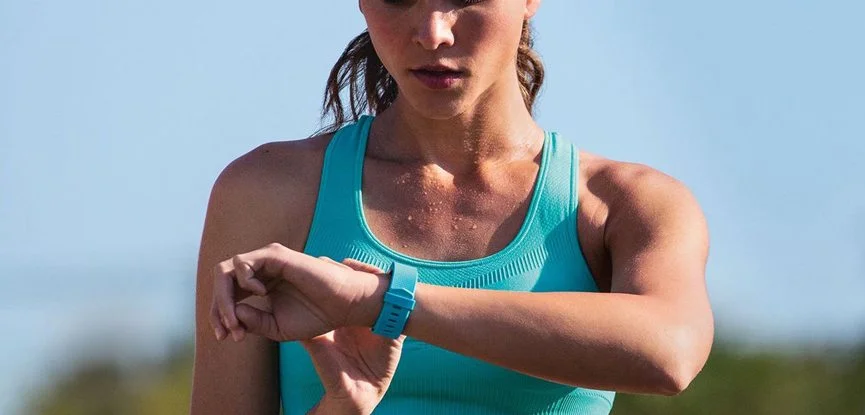Introduction
In an age of digital health technology, fitness trackers have revolutionized how we approach health management. These small, wearable devices provide real-time data about physical activity, rest periods, and recovery, allowing users to monitor and optimize their health in an informed, science-driven way. Whether it’s tracking daily steps, heart rate, sleep cycles, or recovery status, fitness trackers offer a comprehensive approach to wellness management that goes beyond simple activity monitoring.
As the popularity of wearable health tech continues to grow, more individuals are incorporating fitness trackers into their daily routines. These devices offer personalized insights into your health and fitness journey, empowering users to make data-driven decisions for better overall health.
This article explores the key functions and benefits of fitness trackers, including how they track body activity, rest, and recovery, and how they contribute to scientific health management.
1. The Rise of Fitness Trackers
1.1 Evolution of Fitness Technology
Fitness trackers, or wearable activity monitors, have come a long way since their inception. Early devices were simple pedometers, mainly tracking the number of steps a user took during the day. As technology advanced, so did the capabilities of fitness trackers. Modern devices are now equipped with advanced sensors, GPS capabilities, heart rate monitors, sleep trackers, and more.
Leading brands like Fitbit, Garmin, Apple Watch, and WHOOP have developed devices that cater to a wide range of fitness levels and user preferences. What sets these trackers apart today is their integration with mobile apps, offering users a holistic view of their health in real-time, along with personalized feedback and actionable insights.
1.2 Consumer Adoption and Market Growth
The global market for wearable fitness trackers has seen significant growth. According to Statista, the global wearable device market is expected to reach over $60 billion by 2025, driven in part by increasing awareness of personal health and fitness. Fitness trackers are now widely accessible, offering a range of options suitable for both casual fitness enthusiasts and athletes aiming for high-performance levels.
With features designed to track everything from step count to sleep quality, heart rate variability (HRV), and even oxygen saturation levels, these devices have proven to be a versatile tool for those interested in taking control of their health.
2. Tracking Physical Activity: Understanding Movement Data
2.1 Steps and Distance Tracked
One of the most basic features of any fitness tracker is its ability to count steps and measure distance. While this may seem simplistic, step counting has long been recognized as a reliable metric for measuring physical activity and promoting daily movement. Research has shown that walking 10,000 steps per day can help reduce the risk of chronic diseases, including heart disease and diabetes.
Fitness trackers use accelerometers and gyroscopes to measure movement, translating this data into step counts and distance covered. Most devices will sync with your smartphone app, providing daily reports that offer an overview of your activity and progress.
2.2 Active Minutes and Intensity Levels
Fitness trackers go beyond counting steps to track the intensity of your physical activity. These devices measure active minutes—the total duration of moderate-to-intense activity. They also categorize the intensity of your workouts into levels, such as light, moderate, or vigorous, based on your heart rate and movement.
For instance, the Apple Watch and Fitbit Charge monitor your heart rate in real-time, helping you understand whether you are engaging in an effective workout that challenges your cardiovascular system. Consistent vigorous activity can boost caloric burn, improve cardiovascular health, and enhance muscle endurance.
2.3 Heart Rate Monitoring
Heart rate is one of the most critical metrics for gauging your cardiovascular fitness. Most modern fitness trackers come equipped with optical sensors that continuously monitor your heart rate. This data is used to calculate your calories burned, determine your fitness level, and provide real-time feedback during workouts.
Fitness trackers, such as the Garmin Forerunner and WHOOP Strap, can offer insight into your heart rate zones, helping you target specific fitness goals, such as improving aerobic capacity or training at your maximum effort during high-intensity workouts.

3. Rest and Recovery: Understanding the Importance of Downtime
3.1 Sleep Tracking: The Foundation of Recovery
Sleep is a critical factor in the recovery process. Quality sleep allows the body to repair muscles, regulate hormones, and consolidate memories. Fitness trackers have evolved to track sleep cycles, breaking down the different stages of sleep, including light, deep, and REM sleep.
Devices like the Fitbit Charge 5 and Oura Ring use motion sensors and heart rate variability to detect movements and fluctuations in your heart rate while you sleep. By tracking these patterns, fitness trackers provide insights into your sleep quality, which can help you understand how well you are recovering each night.
Getting enough deep sleep is especially important for those who engage in intense physical activities, as this is the stage when muscle recovery occurs. Sleep-tracking features, combined with data on resting heart rate and respiratory rate, help users assess whether they are getting sufficient recovery to perform optimally during the day.
3.2 Resting Heart Rate (RHR) and Recovery
Your resting heart rate (RHR) is an excellent indicator of your recovery status. A lower RHR typically reflects better cardiovascular health and higher fitness levels, as the heart becomes more efficient with regular exercise. Conversely, an elevated RHR can indicate poor recovery, stress, or overtraining.
Fitness trackers monitor your RHR throughout the day and night, providing you with real-time data on your cardiac health. A significant change in RHR, such as a consistent increase, may suggest that your body needs additional rest or recovery.
The WHOOP Strap, for example, calculates a recovery score based on various factors, including RHR, sleep quality, and heart rate variability. This score gives you an indication of how ready your body is for your next workout, helping you make informed decisions about whether to push harder or rest.
3.3 Monitoring Heart Rate Variability (HRV)
Heart rate variability (HRV) is a key metric in understanding your body’s recovery and readiness for exercise. HRV refers to the variation in the time intervals between heartbeats and is an important indicator of autonomic nervous system (ANS) balance. A high HRV typically indicates that your body is in a state of recovery and relaxation, while a lower HRV can signal stress, fatigue, or the need for more rest.
Many fitness trackers now offer HRV monitoring as part of their standard features. By tracking HRV over time, users can gain insights into their stress levels, recovery capacity, and overall wellness. Devices like the Polar Vantage V2 and Garmin Fenix provide HRV metrics alongside sleep data to help you optimize your training and recovery schedules.
4. The Role of Fitness Trackers in Scientific Health Management
4.1 Data-Driven Health Insights
Fitness trackers are not just tools for fitness enthusiasts—they are scientific health management tools. By continuously tracking a range of physiological parameters, such as steps, calories, heart rate, sleep, and HRV, these devices allow users to analyze their health data over time.
This data-driven approach provides valuable insights into long-term health trends, helping users understand how their body is adapting to changes in activity levels, sleep habits, and recovery routines. For instance, garmin’s HRV Stress Testing feature or WHOOP’s recovery tracking allows users to track trends over weeks and months, which can be extremely useful for those managing chronic conditions or trying to optimize athletic performance.
4.2 Early Detection of Health Issues
One of the more exciting developments in the fitness tracker industry is the use of continuous health monitoring to detect potential health issues before they become serious. Some fitness trackers, such as the Apple Watch, have incorporated ECG (electrocardiogram) technology, which monitors heart health and can detect signs of atrial fibrillation (AFib), a condition that often goes unnoticed until it leads to more serious complications.
Similarly, advanced oxygen sensors can monitor blood oxygen saturation levels, giving users insights into their respiratory health and alerting them to potential issues such as sleep apnea. These early-warning features provide a proactive approach to health management, encouraging users to seek medical advice when necessary.
5. Integration with Fitness and Health Apps
5.1 Synchronizing Data Across Platforms
Fitness trackers don’t operate in isolation. Most modern trackers sync with dedicated fitness apps (like Fitbit app, Garmin Connect, Apple Health, and Google Fit) to give users a more detailed and comprehensive view of their health. These apps aggregate data from various devices, enabling users to visualize their daily progress and long-term trends.
For example, after a workout, you can see your heart rate zones, calories burned, and active minutes on your fitness tracker, and then sync that data with your health app to understand your overall health. These platforms can provide detailed reports, daily summaries, and even personalized tips based on your activity data.
6. Conclusion: Empowering Users to Take Control of Their Health
Fitness trackers offer much more than step-counting technology. By tracking everything from body activity to rest and recovery, these devices empower users to take control of their health in a data-driven, scientifically grounded way. Through continuous monitoring and real-time feedback, users are not only improving their fitness but also gaining deeper insights into their overall wellness.
As wearable fitness technology continues to evolve, the future looks bright for health-conscious individuals. From better sleep to improved recovery, fitness trackers are poised to become an even more integral part of personal health management, helping users maintain a balanced, active lifestyle while optimizing their physical and mental well-being.












































